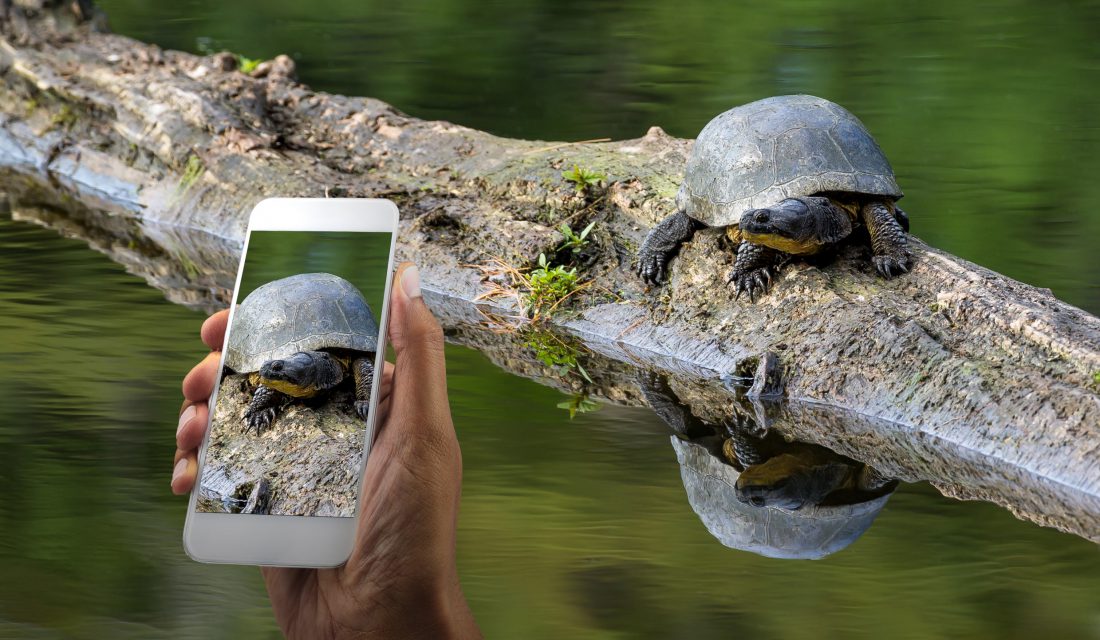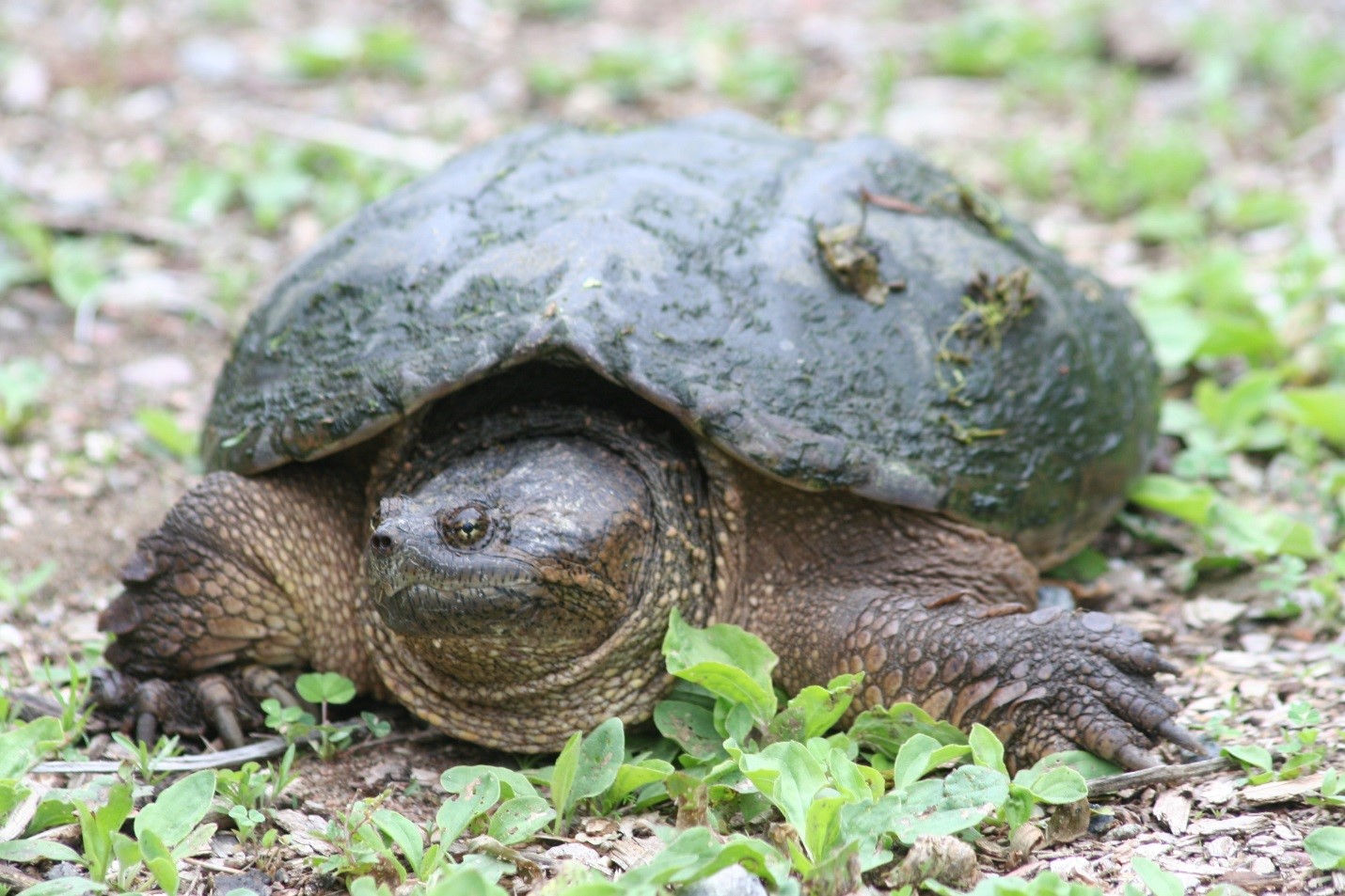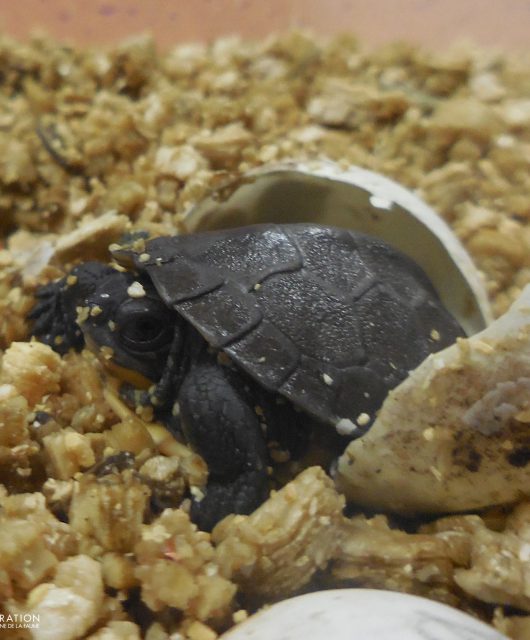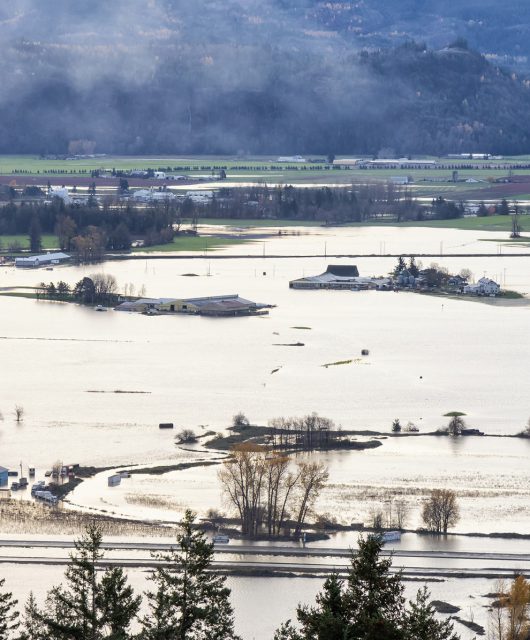We need your help to track down the Giant Lacewing (Polystoechotes punctata).

The Canadian Wildlife Federation and the Committee on the Status of Endangered Wildlife in Canada (COSEWIC) are looking for this elusive species. It is an insect that kind of looks like a cross between a fly and a moth.
The experts at COSEWIC will be assessing its status. We are looking to citizen scientists to report any potential observation of this species to iNaturalist Canada.
i-What?
iNaturalist is a wildlife observation reporting tool that anyone can use. The free mobile app for Android or iOS is easy to use. Or you can add an observation directly on the website at iNaturalist.ca.
It’s very important that a good photo is submitted along with the observation since experts will need this to confirm the species. Equally important is the location you saw it, which the app will automatically add if your phone’s GPS is turned on.
What, Where and When
The Giant Lacewing was once widespread in Canada and beyond. However, it hasn’t been seen in the eastern parts of North America since the 1950’s. But the experts are optimistic it still exists here, just that it hasn’t been seen or reported. Here’s what to look for:
- A mostly black insect that is between 2.5 to and 4 cm centimetres (about 1 to 2.5 inches) long
- Mottled wings, which are held tent-like over the insect’s body
- Most likely to be found in more remote areas
- Attracted to artificial lights, such as light posts, outdoor restrooms and buildings.
- Most common time of year to spot one is mid-June through to early August.
Experts from Canada and around the world are using iNaturalist to keep track of where species are found. This is a valuable opportunity for anyone to contribute directly to species conservation decisions — like this assessment of the Giant Lacewing.
 Not Just Lacewings
Not Just Lacewings
Any observation of wildlife — animals, plants, fungi, molluscs and fish — is a valuable contribution to the knowledge of Canada’s biodiversity. Plus with iNaturalist.ca you can keep track of what you’ve seen and search the map for what others have found. iNaturalist can even help you with identifying what you’ve seen with its instant auto identification feature.
Learn more about iNaturalist.ca and other ways to connect with wildlife.





33 comments
I believe I may have found a Giant Lacewig in Huntsville Ontario. It was on my south facing porch in the am.
If you need to reach me my phone number is [HIDDEN]
That’s amazing, Rena!!
We will be contacting you shortly…
Thank you so much!
Awesome stuff! Giant lacewings are easily mistaken for antlions, fishflies, and other night-flying insects with bare wings. The best i.d. feature for giant lacewings is the outer margin of their wings. The veins in the wing form what almost looks like a ‘frame’ around the wing. This isn’t present in other similar, much more common species.
Thank you so much, Basil. Great “IDing” advice! Hope it helps some folks track these guys down.
After hours of searching I do believe the insect I’ve been trying to identify is indeed one of these, found in Nelson BC. I lack a mobile device to take high quality photos, but I can send the images I do have over email.
Fantastic! We’ll contact you via e-mail shortly. Thank you, Kyle!
Hey again! I didn’t receive an email, but have found another in my apartment whilst doing late night cleaning. Nelson must have quite a few of these guys around.
Hi Kyle
Sorry for the delay. We’re in summer vacation time! James will get back to you as soon as he can when he’s back 🙂
Hi, I have found two giant lacewings in Oliver, BC. I am trying to get a good image of them but they’re very mobile and hard to get a good angle shot. I’ll try to have them up on iNaturalist in a day or two. Feel free to contact me.
Hi Krystal!
Thanks for this. We’ll let James know he can find them on iNaturalist.ca
I have found one in Soap Lake wa. Downloaded the app and will be posting pictures. I contacted Orkin here in Washington state and they have confirmed that it is the very rare Giant Lacewing.
Thanks, Jessica! We look forward to seeing your photos on iNaturalist!
I live in Hope, B.C., and I believe I have found a giant lacewing. It must have come in the bathroom window in the night- it was in a cup this morning. Not sure how to send you a picture? I will leave it in the cup until I hear from you.
How wonderful! Please go ahead and take a picture and either upload to the iNaturalist.ca project, or you can email it to [email protected]. Thank you!
I believe I’ve found one in Carson City, Nevada. I can take pictures on my phone, but they’re poor quality.
I also think that I have previously seen one in Minden, Nevada.
I think we jusr saw one at Gardnerville Elementary School, Nevada.Unfortunately I didn’t take any pictures.
Hi,
I am pretty certain that I have just photographed a giant lacewing on my front door jam in Fort Bragg California (Mendocino county – 2 miles East of the pacific coast).
I would have been happy to include the photo here, but your comment section does not allow that.
If you would EMail me I would be happy to send you a copy of the photo by reply EMail.
Best Regards,
Gary McCray
That’s great! Your best bet is to upload your photo into iNaturalist.ca!
I just caught a live one at Cal Poly Humboldt. I posted to inat. Let me know if there is anything else I should do
Perfect! Thank you!
Found what looks like a giant lacewing beetle but face is different. Found today in Northeastern RI.
2023, July 22, Canada BC, PENTICTON, single adult female found alive on pavement at a shopping mallin the late afternoon; papered specimen will be sent to the University of Manitoba’s Wallis-Roughley Entomological Museum later this fall.
I am fairly sure that I found at least 3, I ended up taking a picture of one.
Found sep 2 Washington US at 9:00 pm on a Fred Meyer.
I have a giant lacewing. It’s the black one. Have some pictures also. Cache creek BC.
Wonderful! We encourage you to upload your observation to iNaturalist.ca so that it can entered into data scientists can use. Thank you!
Had 3 of these giant lace wing in my home in last 2 weeks.
I’ve seen more but all outside over the last few years (specially now after the Flare lake fire.)
I live in the South Cariboo
Hey, I found a giant lacewing on outside on my back porch sill, State MI, around 9PM – 2PM. I think there’s more living in the huge pine tree in our back yard. We’re growing oregano near it. ( Lacewings are attracted to oregano. ) ( I just moved from out of state in December. ) When I first saw it, I almost thought it was a dragonfly with it’s wings spread out individually. Then I was like, wait, but it’s not exactly identical, it’s not a damselfly either. I almost thought it was A mosquito eater, but it’s head was different, so I went to go grab my iPad to take a picture when I came back to take photo, it’s wings were down. I said, wait, that looks like a lacewing. Can they really get that big? So I looked it up, and I was like damn. That’s neat. They really can be that big. I have a photo to show you of the giant lacewing.
Wonderful! We encourage you to upload your observation to iNaturalist.ca so that it can entered into data scientists can use. Thank you!
I made an error in my last post for the giant lacewing, I meant, 9PM – 10 PM.
i found a giant lacewing inside my apartment building and let it outside in Kelowna BC
I found a giant lacewing tonight!!! It was on the side of my house in Sorrento, British Columbia. Thursday August 7, 2025 @ 10:03 pm. I will upload the photo to iNaturalist.ca
Found a giant lacewing iny bathroom, having left windows open, in Mukilteo,Wa, USA.